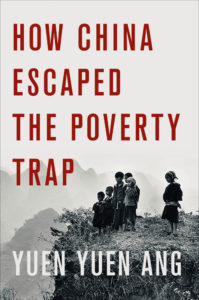
The macro-story on China is well-known, but always bears repetition. Emerging from the carnage of the Mao era, China in 1980 had a GDP of $193 per capita, lower than Bangladesh, Chad or Malawi. It’s now the world’s second largest economy, with a 30-fold increase in GDP per capita, based on a textbook-defying combination of one-party Communist state and capitalism – in the words of one tongue-in-cheek official, ‘no capitalist state can match our devotion to the capitalist sector.’
Success on this scale inevitably finds many intellectual forebears claiming parenthood – China is variously portrayed as a victory for a strong state; free markets; experimentation; and for central planning. How China Escaped the Poverty Trap blows the conventional explanations away, drilling down into what actually happened and reconstructing the history of different cities and provinces through years of diligent research.
This book is a triumph, opening a window onto the political economy of China’s astonishing rise that takes as its starting point systems and complexity. Its lessons apply far beyond China’s borders. The author, Yuen Yuen Ang, starts with a classic developmental chicken and egg problem – which comes first, good institutions or economic prosperity? Different camps within academia and the aid business urge developing countries either to ‘first, get the institutions right’ or ‘first, get growth going’, and then the rest will follow.
Using China as an elephant-sized case study, Ang takes a systems sledgehammer to this kind of linear thinking and argues that development is a ‘coevolutionary process’. Institutions and markets interact with and change each other in context-specific ways that alter over time. The institutions that help to achieve take-off are not the same as the ones that preserve and consolidate markets later on.
